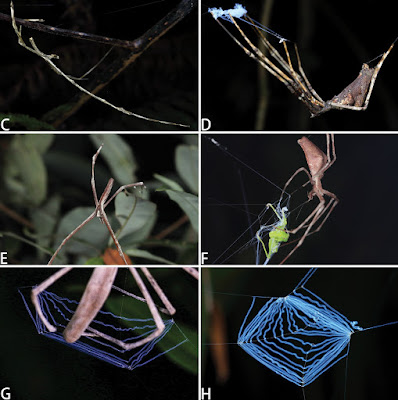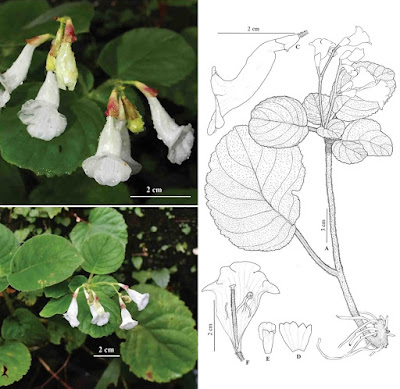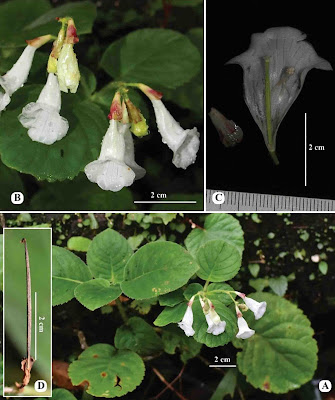[Most Recent Entries] [Calendar View]
Tuesday, February 18th, 2020
| Time | Event | ||||
| 1:39p | [Arachnida • 2020] Asianopis gen. nov. • A New Genus of the Spider Family Deinopidae from Asia Abstract A new genus of the spider family Deinopidae C.L. Koch, 1850 is described from Asia: Asianopis Lin & Li gen. nov., with A. zhuanghaoyuni Lin & Li sp. nov. as the type species. The new genus is divided into two species groups, of which the liukuensis-group includes two species: A. dumogae (Merian, 1911) sp. reval. comb. nov. (♀) and A. liukuensis (Yin, Griswold & Yan, 2002) comb. nov. (♂♀); and the zhuanghaoyuni-group comprises five species: A. celebensis (Merian, 1911) comb. nov. (♂), A. konplong (Logunov, 2018) comb. nov. (♂), A. wangi Lin & Li sp. nov. (♂♀), A. wuchaoi Lin & Li sp. nov. (♂♀), and A. zhuanghaoyuni Lin & Li sp. nov. All previously described species are transferred from Deinopis MacLeay, 1839. Deinopis scrubjunglei Caleb & Mathai, 2014 is treated as a junior synonym of Asianopis liukuensis comb. nov. Keywords: New combination, new species, species groups, systematics, taxonomy Taxonomy Family Deinopidae C.L. Koch, 1850 Genus Asianopis Lin & Li, gen. nov. Type species: Asianopis zhuanghaoyuni Lin & Li, sp. nov. Etymology: The generic name is a combination of the word “Asia”, referring to the distribution of the genus, and the generic name Deinopis. The gender is feminine. Diagnosis: Asianopis gen. nov. can be easily distinguished from Deinopis by the following characters: a prominent setal fringe can be found above the posterior median eyes in both sexes of Asianopis species (Fig. 4A, B), which is absent in Deinopis (Coddington et al. 2012: fig. 3a); the embolic tip of male Asianopis has an embolic middle apophysis (liukuensis-group, Fig. 21A), an embolic terminal apophysis or is weakly folded apically (zhuanghaoyuni-group, Fig. 21B–E), whereas none of these characters is present in Deinopis (Coddington et al. 2012: fig. 11m); the MADL in Asianopis is small and has a basal lobe, while in Deinopis, the median apophysis is larger than the MABL and covers the entire base (Coddington et al. 2012: fig. 11m); female chelicerae with many denticles between the promarginal and retromarginal teeth (Fig. 2F) or female chelicerae without denticles (Fig. 2H), in contrast, denticles are only at the center of any two adjoining retromarginal teeth in Deinopis (Coddington et al. 2012: fig. 5c); femora I enlarged proximally in Asianopis gen. nov. (liukuensis group, Fig. 2I) or not enlarged (zhuanghaoyuni-group, Fig. 2J), but they are enlarged distally in Deinopis (Coddington et al. 2012: fig. 3b); epigynal median plate lateral margins anchor-shaped in Asianopis gen. nov. (Figs 3A, 6A), but ellipsoid in Deinopis (Coddington et al. 2012: fig. 9b); SpD is consistently narrow in Asianopis gen. nov. (Figs 3B, 6B) but tapering in Deinopis (Coddington et al. 2012: fig. 9d).
Molecular phylogeny: The molecular phylogenetic analysis indicates with strong support that all the species in this study do not belong to Deinopis. Based on the 4893 bp-aligned sequences of seven gene fragments, the ML and Bayesian analyses produced the same topology, showing a split of a Southwest China clade from other clades and is strongly supported (Bootstrap value: 88; PP: 0.98) (Fig. 1). Our results are consistent with the results of Chamberland et al. (2018) who conducted a global phylogenetic analysis of Deinopis. Therefore, the Southwest China clade can be classified as a new genus with strong support (Bootstrap value: 100; PP: 1). Although intraspecific support values are low in both ML and Bayesian analyses results, basal nodes are strongly supported, including the sister relationship of A. wangi Lin & Li, sp. nov. & A. zhuanghaoyuni Lin & Li, sp. nov. (Bootstrap value: 95; PP: 1). Natural habitat: All the species of Asianopis gen. nov. were collected from bushes in low-elevation forests.
Composition: This new genus comprises two species groups: the liukuensis-group with two species: A. dumogae (Merian, 1911) sp. reval. comb. nov. and A. liukuensis (Yin, Griswold & Yan, 2002) comb. nov. and the zhuanghaoyuni-group with five species: A. celebensis (Merian, 1911) comb. nov., A. konplong (Logunov, 2018) comb. nov., A. wangi sp. nov., A. wuchaoi sp. nov., and A. zhuanghaoyuni sp. nov. Distribution: China (Fujian, Yunnan, Hong Kong, Guangxi, Hainan), India, Indonesia, and Vietnam. Yejie Lin, Lili Shao, Ambros Hänggi, John T.D. Caleb, Joseph K.H. Koh, Peter Jäger and Shuqiang Li. 2020. Asianopis gen. nov., A New Genus of the Spider Family Deinopidae from Asia. ZooKeys. 911: 67-99. DOI: 10.3897/zookeys.911.38761 | ||||
| 1:49p | [Botany • 2020] Didymocarpus albiflorus (Gesneriaceae) • A New Species from Vientiane Capital, Lao PDR
Abstract Didymocarpus albiflorus, a new species from central Lao PDR, is described and illustrated with photographs. The new species is similar to D. middletonii and D. brevipedunculatus, but can be distinguished by a combination of characters (see diagnosis and note). A detailed description, illustration, photographs, distribution, ecology and provisional conservation assessment and key to the species of Didymocarpus in the flora of Lao PDR are provided. Keyword: Chayamaritia, Didymocarpus middletonii, Didymocarpoideae, Gesneriaceae, Plant taxonomy, Flora of Lao PDR Didymocarpus albiflorus Souvann. & Phonepaseuth, sp. nov., Diagnosis. The new species is similar to Didymocarpus middletonii, but differs in having longer stem, calyx tube funnelform, pale green with reddish blotches, glabrous, corolla white with 9 grayish stripes inside. Distribution. Currently known from type locality at Darn Sinxay temple area, about 20 km from central Vientiane. Ecology and habitat. The species grows on shaded rocks covered with moss in mixed deciduous forest with sufficient seasonal run-off water, at an elevation of 210 m a.s.l. It grows with Begonia martabanica A.DC. (Begoniaceae) and Monolophus bracteatus (K.Larsen & S.S.Larsen) Veldk. & Mood (Zingiberaceae). The massive flowering and fruiting were observed in August and September. Vernacular name. ດອກແກຢົກຂາວ ‘Dok Kea Yok Khao’ [funnel white jade flower] (suggested here). Etymology. The specific epithet is derived from the white flowers. Notes. The new species is similar to Didymocarpus middletonii, but differs in having longer stem (ca. 17 cm long versus 0.3–0.7 cm long), calyx tube funnelform, pale green with reddish blotches, glabrous (vs. tube urceolate, dark red, multicellular eglandular hairs), corolla white with 9 grayish stripes inside (vs. light red at base, reddish to blackish purple with 9 dark stripes inside). This species is also similar to D. brevipedunculatus Y.H.Tan & Bin Yang, but differs in that the leaves ovate-elliptic (vs. ovate), inflorescences occur on axil near the top of stem with 3–4 flowers (vs. one per axil with numerous flowers), peduncles ascending to erect (vs. pendulous), calyx pale green with reddish blotches (vs. pale green to white), corolla inside with 9 white-grayish longitudinal (vs. inside with 9 purplish to deep red longitudinal stripes), ovary multicellular eglandular hairs (vs. glabrous). Keooudone Souvannakhoummane and Phongphayboun Phonepaseuth. 2020. Didymocarpus albiflorus (Gesneriaceae), A New Species from Vientiane Capital, Lao PDR. Taiwania. 65(2); 109-113. |
| << Previous Day |
2020/02/18 [Calendar] |
Next Day >> |







